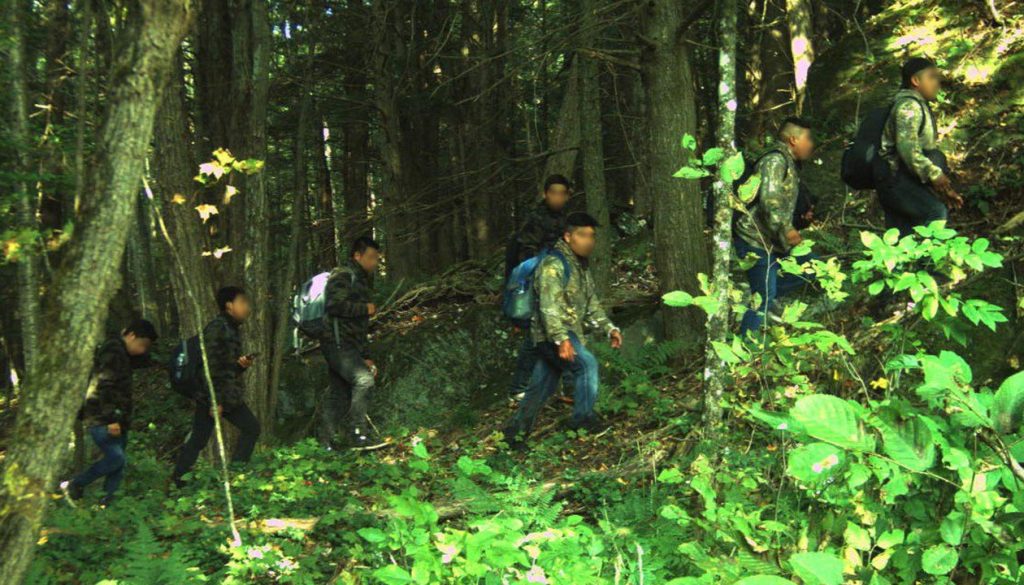The Shifting Landscape of Human Smuggling at America’s Northern Border
In a concerning development that highlights the evolving nature of illegal immigration, Canadian authorities recently intercepted a U-Haul truck near the Vermont border carrying 44 migrants. This August 3rd incident, now under investigation as a suspected human trafficking operation, represents a significant shift in smuggling patterns as pressure intensifies along the southern border. According to immigration attorney Peter Lumaj, who has practiced immigration law for decades, this case exemplifies how smuggling networks are becoming increasingly sophisticated in their operations across America’s northern frontier. “The smugglers are very sophisticated,” Lumaj explained in an interview with Fox News Digital. “They are able to read what’s happening in a certain country, whether it’s the United States, Canada, or Mexico.” This adaptability allows trafficking networks to quickly pivot their operations in response to changing enforcement patterns.
While smuggling along the northern border isn’t new, what has changed is the directionality of movement. Historically, migration flows were predominantly from Canada into the United States. However, recent years have witnessed a notable surge in migrants attempting to cross into Canada from the U.S., often to avoid deportation to their home countries. This reversal reflects the complex and fluid nature of migration patterns, driven by changing policies and enforcement priorities on both sides of the border. The sophistication of these operations has increased dramatically, with smugglers leveraging technology like GPS tracking and social media platforms including TikTok, Instagram, and Facebook to coordinate their routes and evade border patrols. These digital tools have become essential components of modern smuggling operations, allowing for real-time adjustments to law enforcement activities.
The implementation of sanctuary policies at state and local levels has further complicated border enforcement efforts. Lumaj highlighted his home state of Connecticut, where officials recently expanded protections for undocumented immigrants, as an example of this trend. “There are almost 1,200 detainees in Connecticut right now whose holds are not being respected by state leaders,” he noted, arguing that such policies violate federal law and the Constitution’s supremacy clause. When states offer benefits like driver’s licenses, in-state tuition, and sanctuary protections to undocumented immigrants, it creates what Lumaj describes as “shopping grounds” for migrants seeking the most favorable environments after crossing the border. “Every state has become a border state,” he emphasized. “When millions come in, they’re going to look for where they get the greatest benefits. The smugglers know this, the traffickers know this, and they’re taking advantage of the chaos.”
The demographics of those being smuggled reveal another layer of this complex issue. According to Lumaj, smuggling rings typically target single men between the ages of 18 and 35 who possess the physical stamina to endure arduous border crossings. These journeys are often life-threatening, with Lumaj recounting cases he has personally handled where individuals were abandoned in remote areas and nearly died before encountering Border Patrol officers. “Smugglers have no mercy. It’s about money,” he stated, highlighting the purely transactional nature of these operations. The financial incentives driving human smuggling have transformed it into a lucrative criminal enterprise, with networks constantly refining their methods to maximize profits while minimizing the risk of detection by authorities.
It’s crucial to understand the distinction between smuggling and trafficking, which Lumaj clarified involves exploitation. “Usually, people who want to be smuggled into the United States or Canada, they approach the smuggler, whereas traffickers are very good at sort of identifying the person that they want to traffic,” he explained. This difference is particularly evident in cases involving vulnerable populations such as minors. Lumaj described heartbreaking scenarios where underage girls were lured with promises of legitimate employment opportunities as babysitters, au pairs, or models, only to find themselves trapped in coercive sex trafficking operations. “As a father, I can identify with that,” he reflected. “It’s heartbreaking, but yes, it exists, and it is out there. And I don’t think we should have any mercy on these traffickers that are taking advantage of these young girls.”
The recent U-Haul incident at the Vermont border serves as a stark reminder of the evolving challenges facing border security efforts. As smuggling networks continue to adapt and exploit weaknesses in the system, a comprehensive approach to immigration enforcement becomes increasingly necessary. The sophistication of these criminal enterprises requires equally sophisticated responses from law enforcement agencies on both sides of the border. The human cost of these operations—from the physical dangers faced by migrants during their journeys to the exploitation experienced by trafficking victims—underscores the urgent need for effective policies that address not only border security but also the underlying factors driving migration. As both the United States and Canada grapple with these complex issues, collaboration between countries and coordination across all levels of government will be essential in developing strategies to combat human smuggling and trafficking while protecting vulnerable populations.


